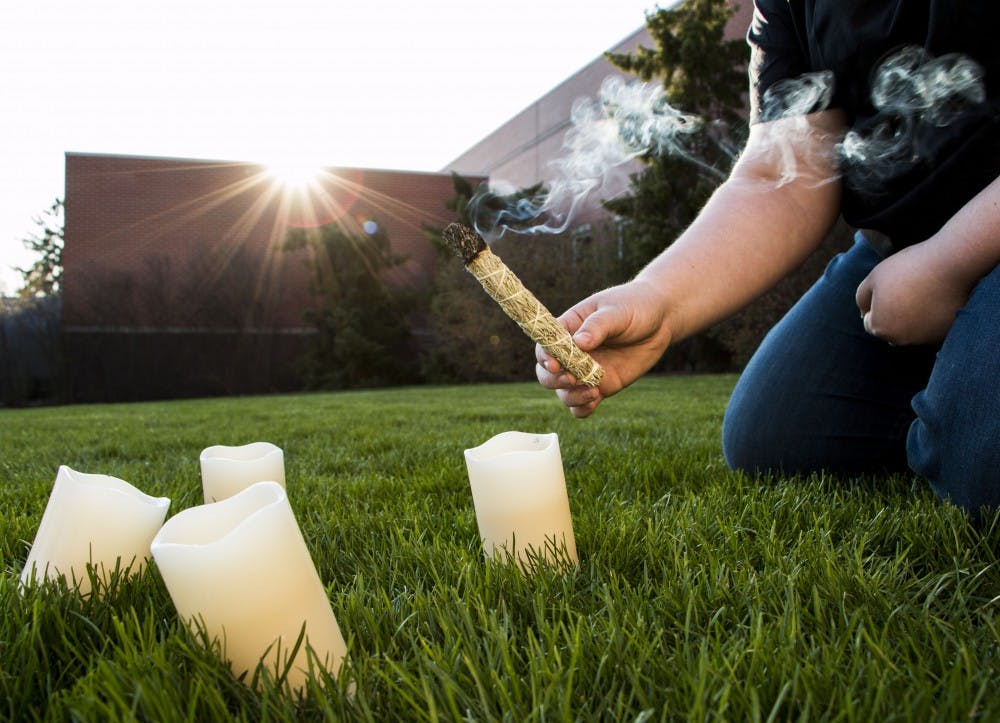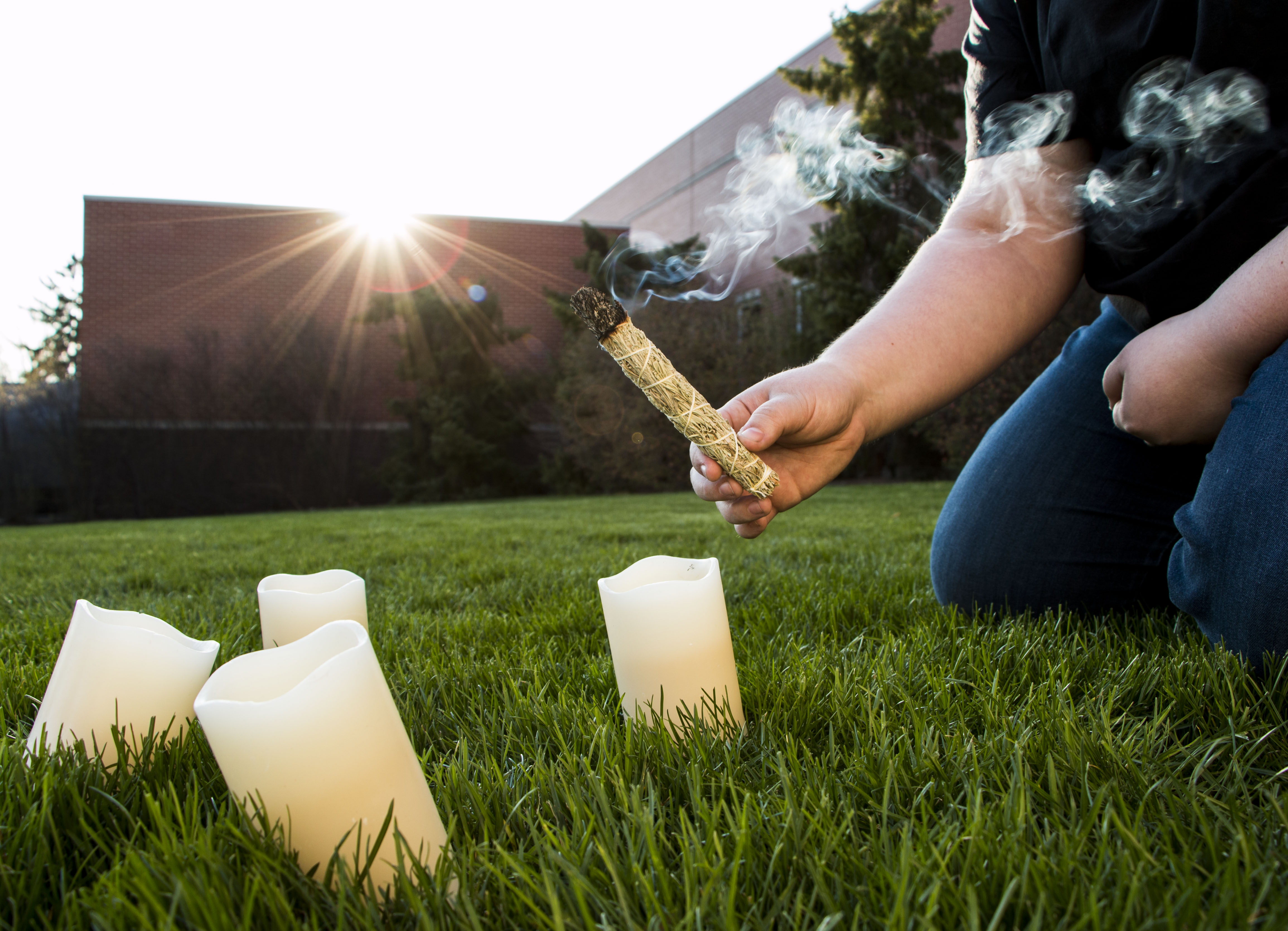|
|
|
A student sets up a North American Wiccan spring sage blessing. The ritual is a celebration bringing in the new season after winter. DN PHOTO TAYLOR IRBY |
While many can fulfill their spiritual needs in a row of pews on Sunday morning, Jackson Eflin can just take a step outside to find his church: nature.
Eflin, a senior creative writing major, is the president of Ball State’s Society for Earth-based Religions.
The group serves primarily as a discussion group for followers of neo-pagan religions, such as Heathenism and Wicca, but anyone from any religious background is welcome to join. There are a few students in the group who follow a mixed form of Christianity and neo-paganism, Eflin said.
“We like to say there is space for every faith,” Eflin said. “Our main goal is to provide a safe place for people of all religions to meet, exchange ideas and help them grow in their faith.”
There has been a significant increase of neo-pagans in the United States from 1990 to 2008, according to Trinity College’s American Religious Identification Survey. The number of those who identify with new religious movements, which include neo-pagan religions, rose from 1.3 million in 1990 to 2.8 million in 2008.
Dixie Hucke, the vice president of the Society for Earth-based Religions, first became interested in neo-paganism after a friend introduced her to it in high school. She said the wealth of information about neo-pagan religions on the Internet led her to identify as a Kemetic Reconstructionist.
“The Internet was a huge tool for me,” the junior fashion merchandising and apparel design major said. “People are able to see more things ... and when they find something interesting, they want to dig deeper into it.”
|
|
|
Sage is used in Wiccan rituals for blessings and cleansings. Each Pagan
worshipper approaches their unique religion differently. DN PHOTO TAYLOR
IRBY |
Neo-pagan religions tend to show a reverence toward nature, and followers believe divinity can be found in the relationship between humans and nature, according to Macmillan Reference USA’s Encyclopedia of Religion.
But Eflin said beliefs and practices can differ for each individual.
“If you ask seven different pagans to define what paganism is, you will get eight different answers,” he said.
Eflin follows the spiritual path of Heathenism. Like most other neo-pagan religions, Heathenism’s beliefs and ideals vary from person to person. For him, nature is an important source for his spiritual well-being.
“My church is everywhere,” Eflin said. “And there’s always a new lesson to learn, like observing the way the grass grows or where the leaves fall, there’s some message that you can interpret from that.”
For a compass to provide a moral direction, Eflin adheres to the Nine Noble Virtues: courage, truth, honor, fidelity, discipline, hospitality, industriousness, self-reliance and perseverance.
Also, Eflin said the belief in Norse gods, such as Odin, Thor and Freyr, is another important component of his belief system.
“It’s complicated. ... A lot of times when you look at what the core beliefs are, they are up in the air,” he said.
With so much room for diversity in neo-pagan beliefs, one may expect the members of the Society for Earth-Based Religions to clash. But Eflin said that is not the case because the exposure to a wide-range of beliefs heightens the capacity for empathy.
For those interested in learning more about neo-paganism, the group will meet at 11 a.m. Friday in the Atrium for public Tarot card readings.







